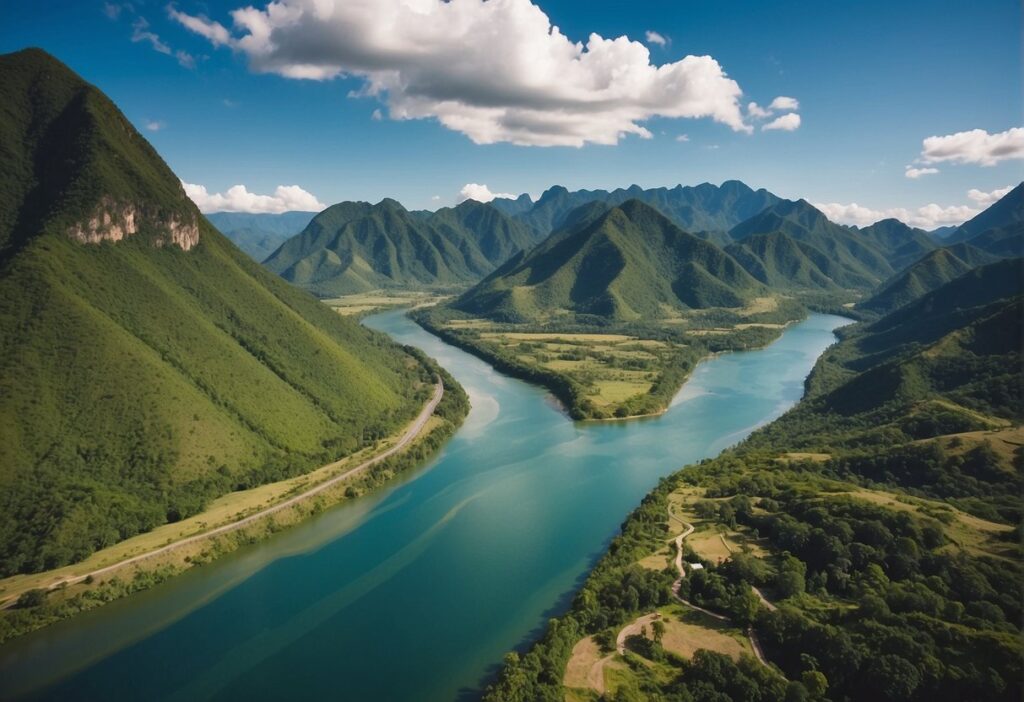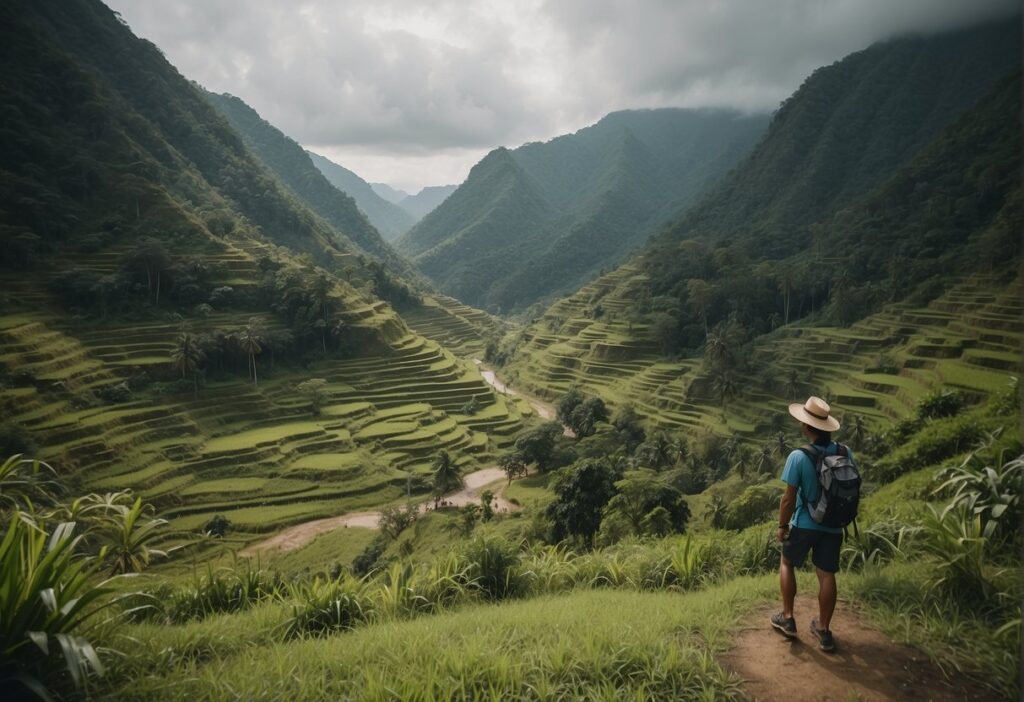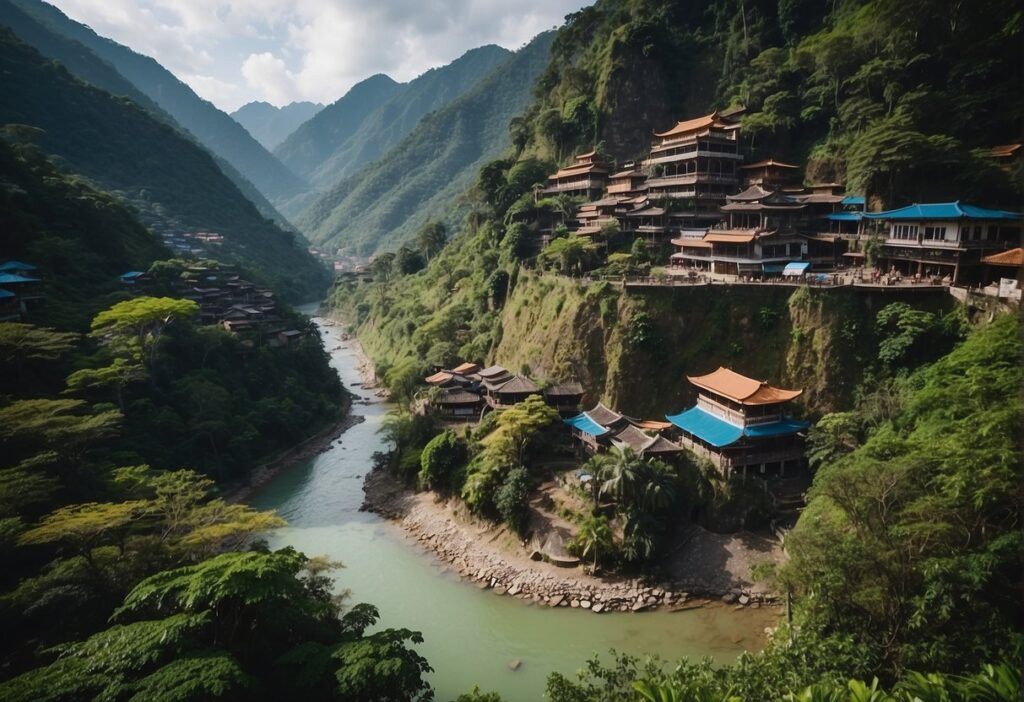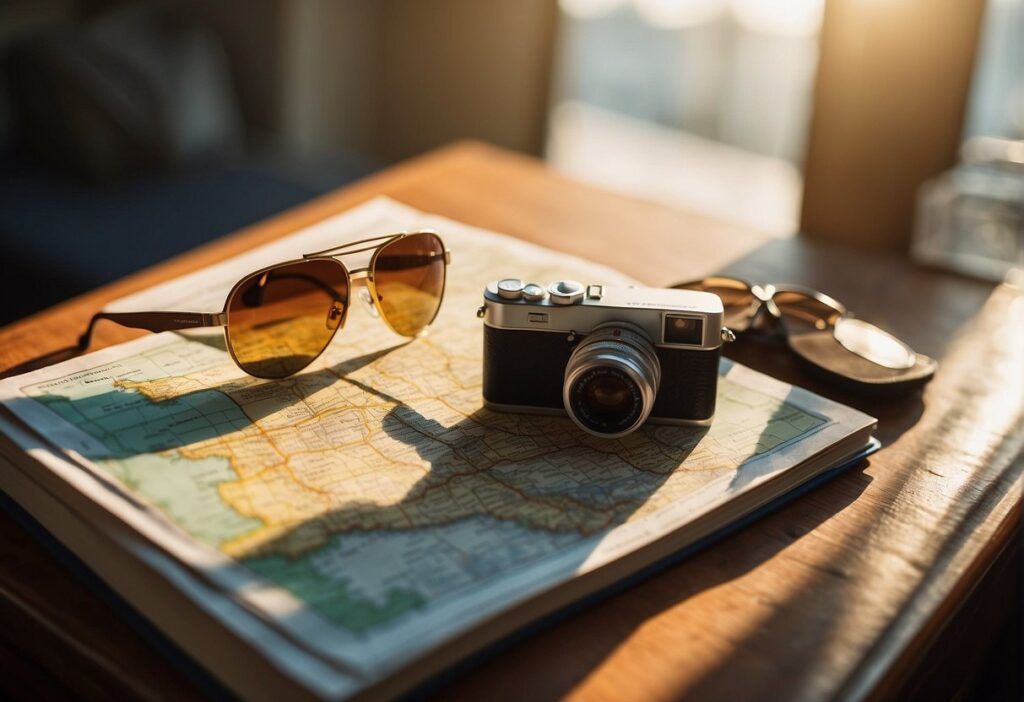Nestled in the heart of the Cordillera mountains in the Philippines, Apayao is a province where nature’s grandeur meets rich cultural heritage. This serene land invites us to marvel at its dramatic landscapes—from its rolling hills and pristine rivers to its impressive subterranean caves. When we explore Apayao, we’re not just visiting; we’re embarking on an adventure that promises to connect us with the tranquility of nature and the warmth of its local cultures. Come with us and check out what to do in Apayao!

Our journey through Apayao offers an array of activities suited for everyone, from the thrill-seeker to the culture enthusiast. The terrain allows for exhilarating outdoor activities, while the province’s history and festivals provide a deep dive into the traditions of the Isnag tribe and other local communities. Whether we’re relaxing by serene waterfalls, exploring the rugged rock formations, or partaking in vibrant cultural festivities, Apayao presents us with a treasure trove of experiences waiting to be discovered.
Key Takeaways
- Apayao combines its stunning natural wonders with a strong cultural presence.
- Opportunities for adventure and cultural immersion abound in this serene province.
- The natural beauty and cultural richness make Apayao an unforgettable destination.
Exploring Apayao’s Natural Attractions

Apayao offers a rich tapestry of natural wonders, from cascading waterfalls to enigmatic cave systems and towering mountain ranges. Each site presents a unique adventure for nature lovers, providing a glimpse into the region’s stunning landscapes and ecological diversity.
Magnificent Waterfalls
In Apayao, we find nature’s power and serenity converging at the numerous waterfalls that dot the province. Bayugao Falls is a must-visit with its accessible trekking path and refreshing waters, offering a respite after a 30-minute hike. Just as remarkable, Gololan Falls emerges amidst the lush backdrop, inviting us to marvel at its beauty and take a revitalizing dip.
Bayugao Falls
- Location: Luna, Apayao
- Trekking Time: 30 minutes
Gololan Falls
- Nature’s Presence: Engulfed by vibrant flora
Mystical Caves
Caving enthusiasts will be drawn to Apayao’s subterranean marvels, such as Lussok Cave with its impressive formations and the crystal-clear waters of its underground river. Similarly, Manacota Cave astounds us with its own underground river, revealing spectacular scenes sculpted over millennia.
Lussok Cave
- Features: Cathedral-like dome, crystal formations
Manacota Cave and Underground River
- Explore: Otherworldly rock formations alongside flowing waters
Breathtaking Mountains
We ascend to explore Apayao’s rugged terrain where mountains like Marag Valley challenge our skills and reward us with panoramic views. The journey uncovers not only the grandeur of the landscape but also the diverse flora and wildlife that call these heights home.
- Marag Valley
- Highlights: Vibrant ecosystems, natural wonders of Apayao
- Wildlife Spotting: Home to rich fauna including endemic species
As we traverse Apayao’s exalted elevations, we connect with nature’s timeless rhythms and the profound tranquility found in its high-altitude sanctuaries.
Cultural and Historical Heritage

In Apayao, we’re privy to a rich tapestry of cultural and historical heritage that embodies both the indigenous traditions and the remnants of the Spanish colonial period. This section invites readers to explore the vibrant cultural identity of the Isnag tribe and visit enduring historical sites that encompass our storied past.
Indigenous Traditions
Apayao’s heart lies in the customs of the Isnag tribe, an ethnic group historically known for their riverine lifestyle and intricate craftmanship. We celebrate our Indigenous culture through various annual festivals, such as the colorful Say-am Festival, which showcase traditional dances, music, and rituals. The Isnag people are also celebrated for their meticulous artistry in basketry and weaving, culminating from their harmonious relationship with nature.
Religious and Colonial Landmarks
Reflecting our diverse heritage, Apayao houses several historical markers from the Spanish Colonial Period. Among these, the Mataguisi Church Ruins stand as a testament to the province’s storied religious past. The ruins grant us an insight into 18th-century architecture and the region’s encounter with Spanish missionaries. Our religious and colonial landmarks continue to attract visitors, illustrating the pivotal chapters in our province’s evolution.
Festival and Events

In Apayao, we find ourselves immersed in a tapestry of vibrant culture and traditions through various festivals and events. These festivities offer a window into the rich heritage of the region, celebrating everything from indigenous customs to environmental conservation.
Say-Am Festival
The Say-Am Festival is a hallmark of Apayao’s cultural identity. It embodies the community’s spirit with activities that include traditional rituals, parades, and beauty pageants. Each year, we are invited to witness the beauty of Apayao’s local attire, performances, and artistry. The festival not only celebrates our history but also creates opportunities for local and visiting traders to display their agricultural produce and handicrafts in agro-industrial trade fairs.
Indigenous Games
As part of our commitment to preserving our ancestral traditions, we take pride in the Indigenous Games Festival. Here, games that have been passed down through generations are played in fierce but friendly competitions. These games are a testament to our physical prowess and strategic thinking, reflecting our enduring connection to our ancestors.
Ecotourism Events
Our dedication to environmental conservation shines through in the diverse Ecotourism Events that Apayao hosts. These events blend our love for nature with sustainable tourism practices, showcasing tourist spots that are both breathtaking and responsibly managed. From guided nature treks to river clean-up drives, we come together to ensure that our natural wonders are preserved for generations to come.
Outdoor Adventures

In Apayao, we are spoiled with a multitude of outdoor activities that cater to adventurers of all levels. From the serene to the extreme, the region’s rich natural landscape offers something for every outdoor enthusiast.
Hiking and Trekking
We find our stride along Apayao’s rugged terrain, with numerous hiking and trekking opportunities that showcase the province’s stunning scenery. One of the must-visit hiking spots is Mt. Solo, where the journey rewards us with panoramic views. For those seeking a gentler adventure, the trek to Manacota Cave and Upper Maton springs offers a chance to explore the province’s unique geological formations at a more relaxed pace.
Aquatic Activities
Our aquatic adventures in Apayao are nothing short of breathtaking. The region’s rivers and falls invite us to immerse ourselves in activities like swimming and diving. The clear waters near Manacota Cave are perfect for swimming in a secluded and peaceful environment, while the adrenaline-pumping experience of river rafting can be found in Apayao’s tumultuous waterways.
Rock Climbing and Camping
For we who are inclined towards more vertical challenges, Apayao offers rock climbing experiences with the stunning backdrop of its lush landscapes. After ascending picturesque cliffs, camping under the stars is an experience we won’t soon forget. The province’s terrain lends itself to both rock climbing and setting up camp in its many serene spots, allowing us to connect with nature in an intimate setting.
Getting to Apayao

When planning our journey to Apayao, it’s crucial for us to understand the available travel options and the means of local transportation within the province.
Travel Options
By Bus: Our travel to Apayao from Manila can typically involve a 12-hour journey by bus, with the Florida Bus terminal in Cubao being a popular starting point. To ensure a more comfortable trip, we might prefer taking the sleeper buses. As of the latest, the fare is set at around PHP 1350 one way.
By Van: Alternatively, we can opt for a van, which can provide us with a more personalized and potentially quicker trip to Apayao. Vans usually depart from major cities like Tuguegarao in Cagayan or from Laoag in Ilocos Norte.
By Air: For the swiftest arrival, catching a flight to Tuguegarao—the closest airport to Apayao—followed by a land transport, offers us a speedy option. From Tuguegarao, we can take a bus or a van to reach Apayao.
Local Transportation
Upon arrival in Apayao, local transportation options are readily available to navigate the province. We have the choice between:
- Buses and Jeepneys: Ideal for longer distances within Apayao. These vehicles frequently travel between towns and are cost-effective modes of transport.
- Tricycles and Motorbikes: These are suitable for short distances or if we’re looking to reach more remote areas that larger vehicles can’t access. They are widely used throughout Luzon and are a staple for local transit.
Armed with this information, we’re now ready to make an informed decision on our best route to Apayao and how to traverse the province upon arrival.
Accommodations and Lodging

When visiting Apayao, we have a variety of accommodations to meet different preferences and budgets. From homestays offering a more personal experience to guesthouses and inns, travelers can enjoy warmth and local hospitality.
Hotels and Resorts
For those seeking more standardized amenities, there are hotels and resorts providing comfort and convenience. The ease of access to Apayao’s attractions makes them a fitting choice for many visitors.
Homestays
The homestay experience in Apayao allows us to immerse ourselves in the local culture. It’s a chance to live with host families and gain insights into their daily lives.
Camping
Outdoor enthusiasts may opt for camping to connect with nature and enjoy the scenic beauty of Apayao.
Table: Accommodation Options in Apayao
| Type | Description | Suitability |
|---|---|---|
| Hotels & Resorts | Full amenities, often central. | Convenience seekers |
| Homestays | Local living, cultural immersion. | Cultural enthusiasts |
| Guesthouses & Inns | Budget-friendly, cozy. | Budget travelers |
| Camping | Nature experience, rustic. | Adventurers |
For a full list of accommodations, including some that are DOT-accredited, we can explore various options to ensure a stay that suits our needs.
During festival times, like the Say-am Festival, accommodations can fill up quickly, so it is wise for us to book in advance to secure our preferred lodging. Regardless of where we stay, Apayao offers places that will enhance our travel experience, each with its own charm and comfort.
Dining in Apayao

When we explore Apayao, we can tantalize our taste buds with the distinctive local cuisine and dining experiences that reflect the province’s rich cultural heritage and natural bounty.
Local Delicacies
The pride of Apayao’s culinary offerings is Pinikpikan, a traditional Cordilleran dish prepared by beating a live chicken to tenderize the meat before cooking. The process may be unique, but it results in a flavorful broth enriched with salt, ginger, and other local spices. We also encounter Kini-ing, smoked or sun-dried meat that often accompanies our meals, offering a burst of smoky flavor that is hard to resist.
Dining Experiences
Dining in Apayao isn’t just about what’s on our plate; it’s also about the experience. We can enjoy these flavors in local eateries, where traditional methods are revered, and dishes are cooked with a deep-seated respect for the past. The food scene here is not limited to restaurants but extends to street food stalls and markets, providing us with an authentic taste of Apayao’s cuisine at every turn.
For a deep dive into the region’s gastronomy, consider visiting places known for their specialties, like the A Guide to the Apayao Food Scene – Secret Philippines, which offers a look into various traditional dishes like tinuno and dibang, or the 10 Must-Try Food Delicacies in Apayao – Secret Philippines, featuring the province’s best culinary delights. Whether we’re sipping on the locally made Ampapaguita wine or indulging in traditional favorites, each meal in Apayao is a celebration of its rich cultural tapestry.
Local Guidelines and Best Practices
When we explore the wonders of Apayao, it’s crucial that we adhere to local guidelines and best practices. Doing so ensures the preservation of the province’s natural beauty and respects the cultural heritage of its people. We’ll look at how we can contribute to environmental conservation, and demonstrate cultural respect.
You can also check out the towns in Apayao.
Environmental Conservation
Best Time to Visit Apayao: To minimize our impact on the environment, it’s important to visit during the dry months from March to June. This is when the trails are less slippery and the forests less dense, making it safer for us and reducing the likelihood of trail damage. During this period, Apayao reveals its lush landscapes, making it an ideal time for exploration.
- Rules to Remember:
- Always follow the local practice of lapat, which encourages the protection of natural areas. More about this practice can be found documented in an article on Philippine beach guide.
- Dispose of waste properly and never leave trash behind.
- Stick to marked trails to prevent soil erosion and damage to plant life.
Cultural Respect
In recognizing the importance of Apayao’s cultural traditions, we must engage with the local community with sensitivity and awareness.
- Guidelines to Uphold:
- Dress modestly and behave courteously when visiting sacred sites and during local festivals.
- Seek permission before taking photographs of individuals or cultural events.
- Show interest in local customs and participate only when invited or when it is appropriate to do so.
By following these practices, we help ensure that Apayao can continue to be a place of wonder for generations to come.
Nearby Destinations to Explore

As we venture through Apayao, it’s worth exploring the neighboring attractions that offer a variety of experiences, from vibrant cultural heritage to breathtaking natural landscapes. The Cordillera Administrative Region and the Cagayan Valley, as well as excursions to Ilocos and the Cordillera Mountains, present opportunities to embrace the diverse beauty and adventure of Northern Luzon.
Cagayan Valley Attractions
-
Cagayan: Just east of Apayao, Cagayan beckons with its rich history and natural beauty. The province’s capital, Tuguegarao City, serves as a gateway to the stunning Cagayan River, the longest and widest river in the Philippines. Visitors can engage in river trekking or cave explorations, such as the renowned Callao Caves.
-
Sagada: A bit further south, but still within reach, Sagada in the Mountain Province reveals an otherworldly charm with its hanging coffins and serene landscapes. One must experience the tranquility of Echo Valley or maybe catch the sunrise from Kiltepan Viewpoint.
Ilocos and Cordillera Excursions
-
Ilocos Norte: To the west, Ilocos Norte flaunts a blend of cultural and natural attractions, including the historic town of Vigan, a UNESCO World Heritage site known for its preserved Spanish colonial and Asian architecture.
-
Cordillera Mountains: For those inclined towards more active pursuits, the imposing Cordillera Mountains offer trekking, mountain biking, and outdoor experiences. The famed Baguio City, often referred to as the ‘Summer Capital of the Philippines’, is a must-visit with its cool climate, lush parks, and vibrant arts scene.
By coordinating visits to these notable nearby destinations, travelers can enrich their experience of the Northern Luzon region, making their trip to Apayao even more memorable.
Practical Information for Tourists

In planning our trip to Apayao Province in the Cordillera Region, it’s essential we consider the practical aspects such as health, safety, currency, and costs. These will ensure our visit to the stunning tourist destinations is enjoyable and stress-free.
Health and Safety
We should prioritize our health by staying updated on recommended vaccinations before traveling to Apayao. Given the province’s natural terrain, preparing a first-aid kit with essentials for minor injuries is a smart move. When exploring outdoor attractions such as the Dupag Rock Formation, we must wear appropriate footwear to prevent slips and pack insect repellent to protect against mosquito-borne illnesses.
While in the province, local emergency numbers should be kept handy. Tap water in the region may not be safe for drinking, so we should either boil water or buy bottled water to avoid health complications.
Currency and Costs
In Apayao, the local currency is the Philippine Peso (PHP). It’s recommended that we exchange our money at major banks or authorized money changers for the best rates.
Costs in Apayao can vary, but generally, the province is known for being cost-effective. Basic accommodation starts at reasonable prices, and local food is both delicious and wallet-friendly. Entrance fees to tourist spots are typically low; for instance, enjoying the natural beauty of attractions like Bayugao Falls is quite affordable.
For our convenience after arriving at Tuguegarao Airport, it’s useful to carry small denominations of the currency for immediate expenses, such as transportation to Apayao, as not all vendors may accept cards or large bills.
Hidden Gems of Apayao

In Apayao, we uncover destinations that offer both tranquility and adventure. Our journey brings us closer to nature and tradition, revealing sites less frequented by tourists but abundant with raw beauty and cultural significance.
Off the Beaten Path
-
Nalvo Cave: When we long for an extraordinary cavern experience, Nalvo Cave beckons. This spelunking site provides us with an intimate encounter with nature’s underground artistry.
-
Purag River: For moments of serene contemplation mixed with soft adventure, Purag River serves as an idyllic getaway. Kayaking down its gentle waters, we’re treated to scenes of unspoiled landscapes rarely touched by the outside world.
Lesser-Known Cultural Sites
-
Vibrant Culture: As we delve into the local communities, we’re welcomed by the vibrant culture of Apayao’s tribes. Their heritage and customs impart to us an authentic experience that’s as enriching as it is rare.
-
Cultural Festivals: Though not widely publicized, the cultural festivals of Apayao resonate with the heartbeat of the province. These celebrations are snapshots of history, showcasing dances, music, and art that have been preserved over generations.
Our exploration of Apayao’s hidden gems connects us to both the land and its people, offering a glimpse into the untouched and the genuine. We weave through both natural and cultural landscapes that leave us with a profound appreciation of this lesser-explored region.
Frequently Asked Questions

Apayao offers untapped natural wonders and cultural experiences for travelers. Below, we clarify common inquiries about the region.
What are the top places to visit when in Apayao?
To fully experience Apayao, one must explore its natural landscapes. Dupag Rock Formation offers challenging hikes and rewarding views, while the Maton Underground River promises an exciting adventure for water enthusiasts.
Which man-made attractions are must-sees in Apayao?
Although known for its natural attractions, Apayao’s man-made landmarks like the Tugot ni Angalo (footprint of the giant Angalo), and various hanging bridges contribute to the province’s charm.
What unique festivals can be experienced in Apayao?
One can immerse in Apayao’s culture during the Say-am Festival, celebrating the province’s founding anniversary, and the Piñaing Festival that honors the rich heritage and crafts, including their traditional burial tombs.
Can you suggest an itinerary for a trip to Apayao?
We recommend a multi-day itinerary to cover Apayao’s expansive attractions. Starting with the natural sites like the rock formations and rivers, and later moving to cultural sites and festivals, will allow you to appreciate the diversity of experiences Apayao offers.
What are the most famous tourist spots in Luna, Apayao?
Luna houses the impressive Marag Valley, a scenic gem perfect for nature photography and tranquil hikes. The Lussok Cave’s underground river also stands out as a must-visit spot in Luna.
What major products are Apayao known for?
Apayao is notable for its agricultural products, such as rice and corn. Moreover, handicrafts like woven baskets and wood carvings reflect the artistry of the locals and are prominent products of the province.

